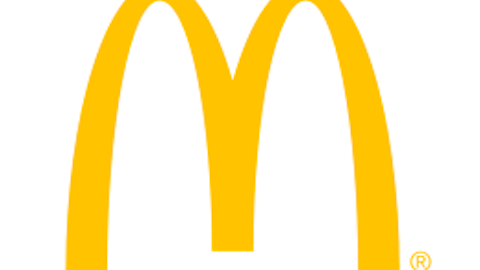The Portfolio of Restaurants
When it comes to companies with fast food collections, Yum! Brands, Inc. (NYSE:YUM) is the prototype. The global fast food company has 39,000 units in more than 130 countries and territories–its brands include KFC, Pizza Hut, Taco Bell, and Little Sheep, and each has high expectations to continue to grow. Recently, the growth has halted in China after chicken was found to have too many antibiotics for China’s liking. Operation Thunder, according to Yum! Brands, Inc. (NYSE:YUM), is in full effect to try to fix the PR nightmare and rebuild the brand in China. Earnings were mostly positive despite the recent dilemma since April earnings showed EPS of $0.70, which beat expectations of $0.60 a share. There was a 20% drop in the quarter from China, but since only 5,300 locations of the massive 39,000 in total are in China, Operation Thunder isn’t nearly as extensive as it could be.
The Takeout/Delivery Chain
Domino’s Pizza, Inc. (NYSE:DPZ) has over 10,330 stores (200 more than in 2012) in over 70 international markets and is the epitome of the takeout restaurant category. Seen as the ultimate comeback story (from trading at around $3 per share in 2008 to approaching $60 per share this year), Domino’s Pizza, Inc. (NYSE:DPZ) is using technology and not just pizza to attract customers. In seeking to improve transparency of the food and delivery process, they are going one more step beyond their Online Pizza Tracker program. Recently, they have further distanced and differentiated themselves from the competition by introducing live streaming video of pizza being made called Domino’s Pizza, Inc. (NYSE:DPZ) Live. Now users are able to see their pizza cook in real-time (minus the sound).
The Fast Food King
McDonald’s Corporation (NYSE:MCD) and their 34,565 restaurants across 119 countries earns them the title of king of fast food. Recently, they have had sales weaknesses overseas, with sales drops of 0.6% globally while the US continues to increase at a slow but steady pace of 0.7%. The company is known for changing their menu routinely to meet seasonal needs like fish sandwiches while following dietary trends. McDonald’s Corporation (NYSE:MCD) has also recently added Chicken McWraps and lower calories Egg McMuffins that are made with egg whites. While the menu evolves, and revenue is now up to $6.6 billion (1% increase), same-store sales, measured for stores open longer than a year, dropped 1.2%.
| Profit Margin (5 Yr Average) | EPS (5 Yr Average) | P/E Ratio | Market Cap | 5 Yr Price Change | |
|---|---|---|---|---|---|
| Darden Restaurant | 5.50% | 1.25 | 16.16 | 6.88B | 45.03% |
| Cracker Barrel | 3.53% | 1.47 | 17.81 | 1.99B | 124.46% |
| Yum! Brands | 10.53% | 0.65 | 21.73 | 30.75B | 68.81% |
| Domino’s Pizza | 5.86% | 0.39 | 26.31 | 3.18B | 318.27% |
| McDonald’s | 19.91% | 1.18 | 19.01 | 102.71B | 67.99% |
The Winner Is…
Domino’s Pizza, Inc. (NYSE:DPZ) has clearly been the best the last 5 years in terms of stock appreciation. Going back 2 years further, McDonald’s Corporation (NYSE:MCD) beats the other 4 companies with a 222% share price gains. Neither is my choice for best stock going forward, however–that goes to Yum! Brands, Inc. (NYSE:YUM). First, there are clear advantages that fast food has over full-service restaurant business models. The menu can change much quicker in a fast food model with fewer consequences. If you want to test the market, you can easily invest in a new item while keeping the rest of the menu intact. Higher consumer traffic makes it easier to gauge if the new item is worthy of a permanent spot. In addition, it is easier to expand fast food at a faster rate. Smaller square footage requirements, up-front costs, and less staffing needs (in terms of pay rates and quantity) favor fast food. As a consequence, profit margins suffer in the full service restaurant model.
Industry trends point out that full-service restaurants suffer more during a sluggish economy. However, even if the economy improves, the world is becoming faster and more time-oriented. During the Great Recession, fast food saw visits increase slightly while full-service restaurants saw 2.9% declines and a 3% drop in visits. While the 3%-4% predictions of a rise in food prices for 2013 based on the Department of Agriculture may hurt the margins of a dollar or value menu, Yum! Brands, Inc. (NYSE:YUM) portfolio is diversified enough to succeed in this scenario. Their fried chicken continues to be profitable even when prices rise. Furthermore, if milk and its byproducts hurt the pizza sector, Yum! Brands, Inc. (NYSE:YUM) diversification helps it beat Domino’s Pizza, Inc. (NYSE:DPZ). While Domino’s has clearly been the best investment in recent years, the industry is flooded with pizza take-outs and the barriers to entry are quite low.
Lastly, although China slowly brings down Yum! Brands, Inc. (NYSE:YUM) in the short-term, this is about the long-term investment potential. In time business will eventually return in China, and this makes Yum! an even better buy now that the stock has dropped slightly from its 52-week highs.
The article Which is a Better Long-Term Investment, Fast Food or Restaurants? originally appeared on Fool.com and is written by Michael Carter.
Copyright © 1995 – 2013 The Motley Fool, LLC. All rights reserved. The Motley Fool has a disclosure policy.


